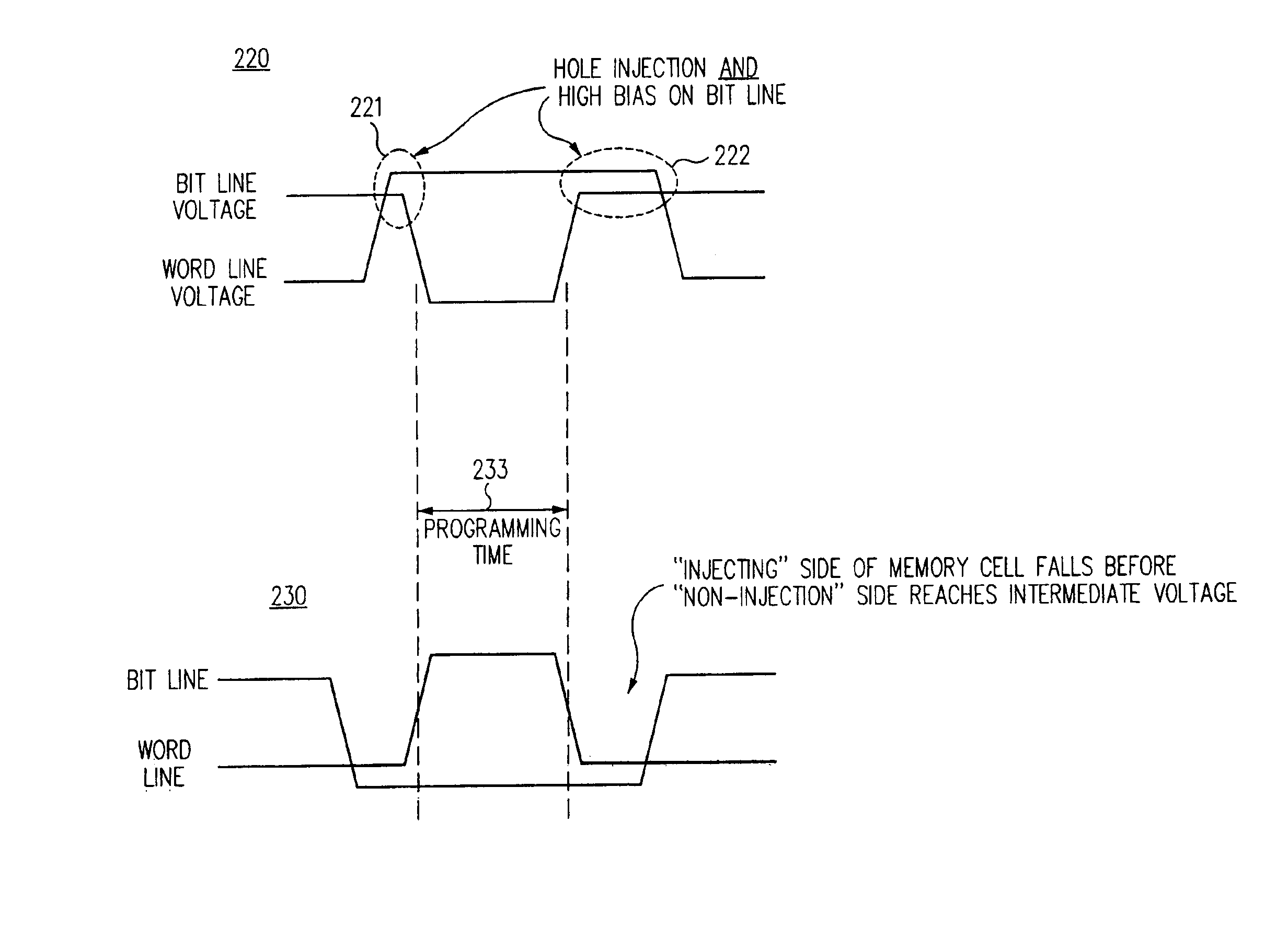Apparatus and method for disturb-free programming of passive element memory cells
a memory cell and passive element technology, applied in electrical apparatus, digital storage, instruments, etc., can solve the problems of increasing voltage stress which can erroneously write adjacent bits, and unintentional programming of adjacent memory cells, so as to increase processing steps and manufacturing costs
- Summary
- Abstract
- Description
- Claims
- Application Information
AI Technical Summary
Benefits of technology
Problems solved by technology
Method used
Image
Examples
Embodiment Construction
[0025]Referring now to FIG. 1, a block diagram is shown of an integrated circuit 100 including a memory array 102, which diagram may be useful to represent various embodiments of the present invention. In one such embodiment, the memory array 102 is preferably a three-dimensional, field-programmable, non-volatile memory array having more than one level of memory cells. Exemplary three-dimensional memory arrays are disclosed in commonly-assigned U.S. patent application Ser. No. 09 / 560,626 referred to above, and in “Three-Dimensional Memory Array Incorporating Serial Chain Diode Stack” by Kleveland, et al, U.S. patent application Ser. No. 09 / 897,705, filed on Jun. 29, 2001, which is hereby incorporated by reference in its entirety.
[0026]In the presently described embodiment, array 102 is a three-dimensional, non-volatile, write-once memory array of passive element memory cells, although other memory arrays are also suitable. Each passive element memory cell within the memory array 102...
PUM
 Login to View More
Login to View More Abstract
Description
Claims
Application Information
 Login to View More
Login to View More - R&D
- Intellectual Property
- Life Sciences
- Materials
- Tech Scout
- Unparalleled Data Quality
- Higher Quality Content
- 60% Fewer Hallucinations
Browse by: Latest US Patents, China's latest patents, Technical Efficacy Thesaurus, Application Domain, Technology Topic, Popular Technical Reports.
© 2025 PatSnap. All rights reserved.Legal|Privacy policy|Modern Slavery Act Transparency Statement|Sitemap|About US| Contact US: help@patsnap.com



